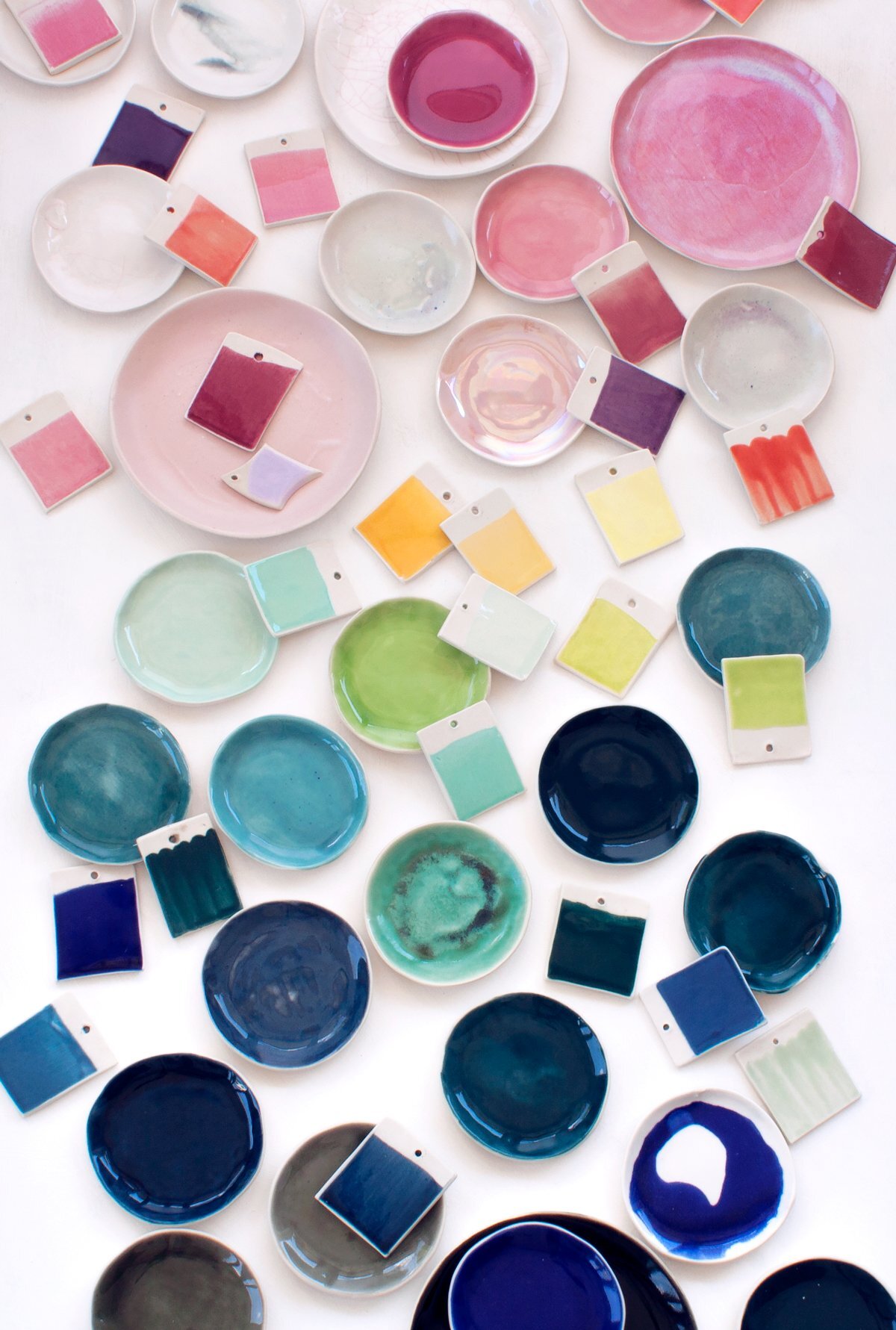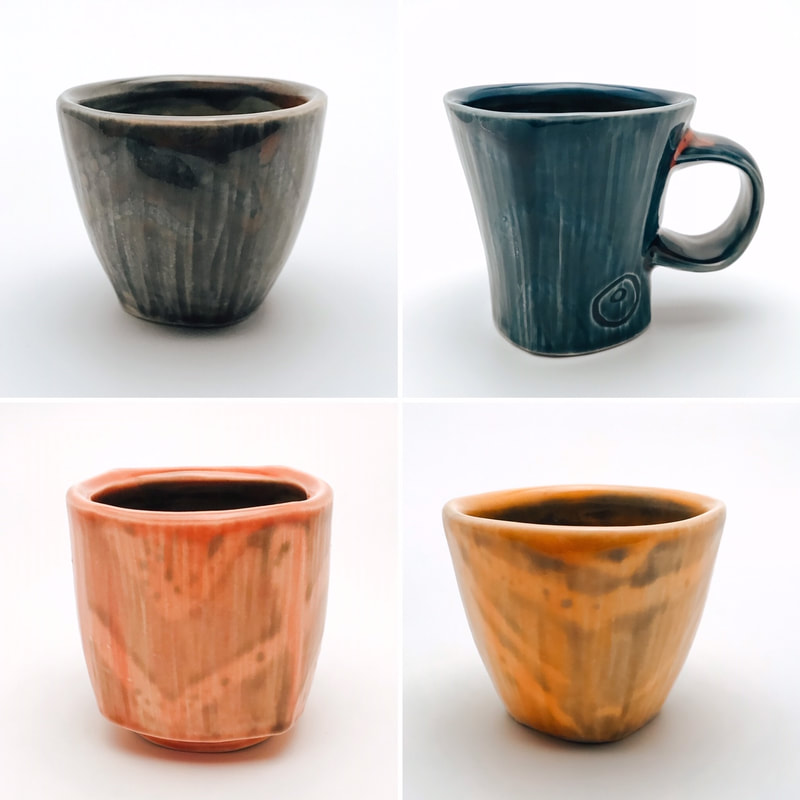
I love this glaze combination. Love. It. And I’m pretty happy with this
Use a lower specific gravity on the second and third layers, submerge the piece in glaze for a shorter period of time, or use brushing or spraying to apply thinner coats. Always let glazes dry between coats. In some cases, you may need to use a fan to dry the work, or leave it out overnight. Make sure you give the last coat of glaze time to dry.

Let's Learn Together Best Glaze Making Resources, Books, Tools, and
April 7, 2023 by Ed Shears Table of Contents To glaze pottery, choose the right glaze, prepare the pottery, and apply the glaze in a smooth, even coat. Fire the pottery in a kiln to fuse properly the glaze to the clay body. Take safety precautions to avoid exposure to hazardous particles and dispose of glaze materials safely. Get Your Glaze On!

Amaco Celadon Glazes LISA YORK ARTS
Firing Temperature. If glaze selection weren't already complicated, the final major factor to consider in selecting a glaze is your firing temperature. Here's the quick and dirty: Low-Fire (Cone 3-6): Temperatures range from roughly 1850-2150 degrees F. Mid-Fire (Cone 4-7): Temperatures range from roughly 2160-2290 degrees F.

analealpottery I love this glaze combination. It is layering glaze on
My question is, what glazes work well together? I know pretty much all mayco brand stuff will layer relatively well. But what about layering others? Will they run together? Will they craze or something?

PC glaze combinations2 Ceramic glaze recipes, Amaco glazes, Glazes
But for serious multi-layering of glazes that you mix yourself, there is one principle method: Adding gum to the recipe. 1% is a good starting point. Gummed glazes are runnier, they drip (and drip more) and dry slowly on bisque. Traditional potters, used to single-layer dipping glazes, can be shocked at how different it is to work with gummed.

Layering is all well and good, but sometimes it's nice to step back and
We put together an assortment of our favorite glaze combos—from classic to downright funky. Active Glazes: Amaro. Active, released Fall 2020. Eggshell. Active, released November 2016. Morel. Active, released Nov 2016. Panna Cotta. Active, released Fall 2020. Harvest Moon.

How to Brush Glaze Pottery Tips Tools And Ideas Pottery Crafters
The answer is yes! Mixing glazes can open up a whole world of possibilities for creating custom colors, textures, and patterns on your pottery. Factors to Consider when Combining and Mixing Glazes When it comes to combining and mixing glazes, there are a few important factors to consider.

amaco celadon glaze combinations
Glass and ceramics go hand in hand; after all, normal glazes usually include silica, which is the main former of glass. Putting glass beads in your pottery can create the most amazing results. After your piece has been glazed, the light will bounce off the glass, making it look quite a lot like a precious jewel.

Mayco Colors op Instagram "Layering only two glazes will yield some
Sometimes two or three glazes work together and make a beautiful new glaze. Alternately try layering a couple of glazes, applying a layer of underglaze or wash before applying a glaze, or brush a wash/glaze on top of the base glaze to jazz it up. There are many little adventures you can have without a spray gun or a big studio facility.

Glazing Combinations and Glaze Results Unloading the Kiln! Day 9
#1 Speedball Underglaze Set of 12 #2 Amaco Velvet Underglaze Set of 12 - 2oz. #3 Sax True Flow Underglaze Set Underglaze Sets Popular Dry Pottery Glaze Picks Mixing and Storing Your Dry Pottery Glazes Don't Forget Wax Resist Pottery Glaze Applicators Final Thoughts

How To Choose Pottery Glaze A Beginner Glaze Guide
Adjust the pressure and distance to control the intensity of the application. Pouring: Pour glaze onto the pottery, allowing it to flow and coat the desired areas. Tilt the piece or use a brush to guide the glaze into intricate details. Remember, practice makes perfect when it comes to applying glazes.

3 Glazes Amaco Glaze Combinations (how to) YouTube
Step 3. Choose how you will apply your glaze. You can either dip your bisque-fired ceramics into the glaze, pour the glaze on, or brush the glaze on. In ceramics classes at The Crucible, we use underglazes to add color and pattern before applying a coat of glaze, which seals and waterproofs the ceramics.

A set of high fire bowls all glazed with slightly matt glazes which
It's even better when you can find two or more glazes you adore, AND that work well together! In today's post, Amelia Stamps shares two of the glazes she adores and her process for layering them to make them even more interesting! -Jennifer Poellot Harnetty, editor Two Friendly Cone 6 Glaze Recipes

Journey of an Australian trio! My plight to create coloured glazes and
So what do these materials do, how do they work together? Danielle: Without getting too confusing, simply put, each material plays a role in helping the glaze form. Some materials help make the glass form, others change the color of the glaze, and others help the glaze melt when the temperature isn't high enough.

Mayco Pottery Commercial Glaze Combinations Cone 6 PotteryByM
Transparent glazes generally require a thin coating, while opaque glazes normally work well applied more generously. If dipping one glaze over another, it is best to apply the second glaze before the first has completely lost its wet sheen. This will allow the two coats to dry together and help to prevent peeling.

Pottery Glaze Combinations Bing images Ceramic glaze recipes
In This Section Published Sep 26, 2017 In ceramics, finding the perfect glaze for your work is only part of the challenge. If the application is sloppy, it will show in the finished glazed piece! So in this post, Frank James Fisher shares some handy tips to make sure your glaze goes on right.